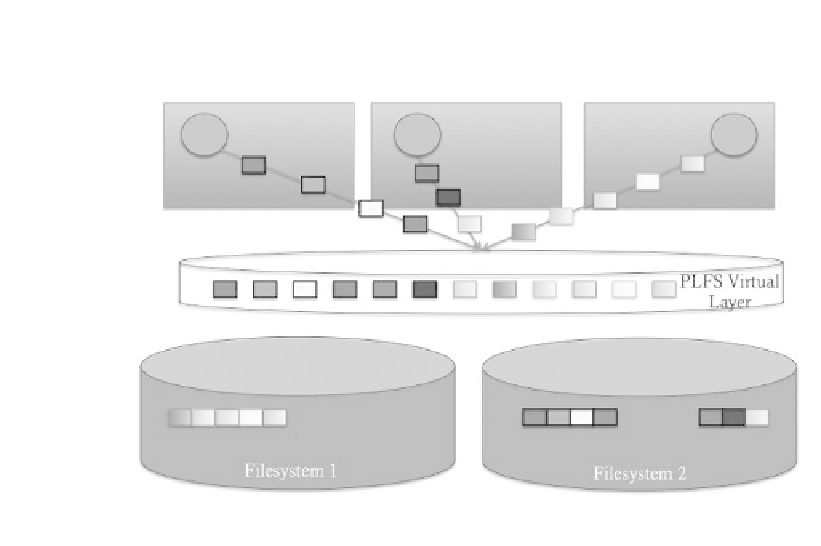Hardware Reference
In-Depth Information
FIGURE 14.2: PLFS small file mode transforms a stream of small file creates
from an individual process into two large streaming files sent to the underlying
file system (one for user data and one for PLFS metadata). Note how PLFS
can also aggregate the performance of multiple file systems; at-le mode
is the same except that PLFS stores each logical file as its own physical file
instead of as a chunk within a single physical file as shown here. Flat-file mode
therefore does not need another file for PLFS metadata since the mapping
between logical and physical is purely algorithmic. [Image courtesy of John
Bent (EMC).]
This mode transforms the performance extracted from the underlying file
system to match its maximum bandwidth for streaming data instead of match-
ing its maximum file creation rate. The amount of performance gained is de-
pendent on the size of the individual files.
14.3 Deployment, Usage, and Applications
PLFS is currently installed on most of the classified and unclassified su-
percomputers at LANL. It has also been directly ported into several LANL








